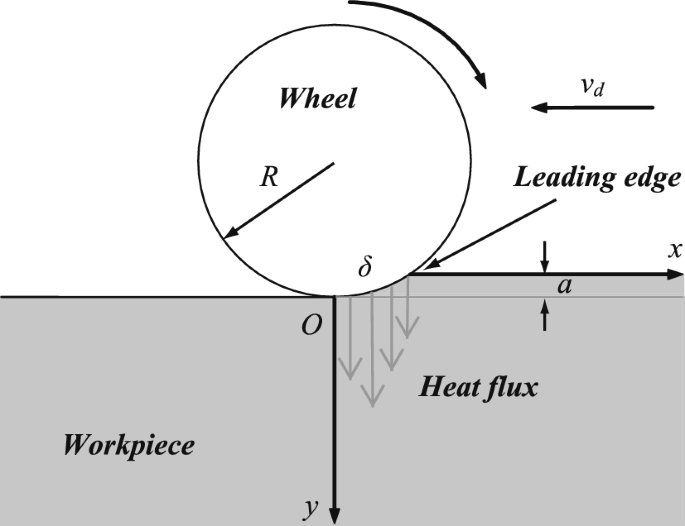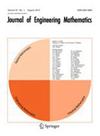干式表面磨削瞬态过程的解析解及数值验证
IF 1.4
4区 工程技术
Q2 ENGINEERING, MULTIDISCIPLINARY
引用次数: 0
摘要
摘要在干式表面磨削传热的Samara-Valencia模型框架下,计算了砂轮与工件啮合(切入)和分离(切入)瞬态状态下工件温度场随时间变化的解析表达式。我们考虑的主要假设是沿着车轮和工件之间的接触区有一个恒定的热通量剖面。根据得到的温度场解析表达式,得到了切入瞬态区最高温度的封闭表达式。此外,还描述了一种非常快速的切割过程中最高温度的数值计算方法。这个最高温度是工件热损伤的原因。实验结果表明,在切断瞬态状态下,热损伤风险较大。目前的分析模型再现了这一实验特征。最后,利用有限元分析对分析结果进行了数值验证,旨在为在线磨削过程的监测提供有用的数据,以避免热损伤。本文章由计算机程序翻译,如有差异,请以英文原文为准。

Analytic solution and numerical validation of the transient regime in dry surface grinding
Abstract In the framework of Samara–Valencia model for heat transfer in dry surface grinding, analytical expressions for the time-dependent temperature field of the workpiece during the transient regime in which the wheel is engaged (cut-in) and disengaged (cut-out) from the workpiece are calculated. The main assumption we consider is a constant heat flux profile along the contact zone between the wheel and the workpiece. According to the analytical expression obtained for the temperature field, a closed-form expression for the maximum temperature during the cut-in transient regime has been obtained. Further, a very rapid method for the numerical evaluation of maximum temperature during the cut-out is described. This maximum temperature is responsible of the thermal damage of the workpiece. Experimental evidence shows that the thermal damage risk is greater during the cut-out transient regime. The present analytical model reproduces this experimental feature. Finally, the analytical results have been numerically validated using FEM analysis and are intended to be very useful for the monitoring of the online grinding process in order to avoid thermal damage.
求助全文
通过发布文献求助,成功后即可免费获取论文全文。
去求助
来源期刊

Journal of Engineering Mathematics
工程技术-工程:综合
CiteScore
2.10
自引率
7.70%
发文量
44
审稿时长
6 months
期刊介绍:
The aim of this journal is to promote the application of mathematics to problems from engineering and the applied sciences. It also aims to emphasize the intrinsic unity, through mathematics, of the fundamental problems of applied and engineering science. The scope of the journal includes the following:
• Mathematics: Ordinary and partial differential equations, Integral equations, Asymptotics, Variational and functional−analytic methods, Numerical analysis, Computational methods.
• Applied Fields: Continuum mechanics, Stability theory, Wave propagation, Diffusion, Heat and mass transfer, Free−boundary problems; Fluid mechanics: Aero− and hydrodynamics, Boundary layers, Shock waves, Fluid machinery, Fluid−structure interactions, Convection, Combustion, Acoustics, Multi−phase flows, Transition and turbulence, Creeping flow, Rheology, Porous−media flows, Ocean engineering, Atmospheric engineering, Non-Newtonian flows, Ship hydrodynamics; Solid mechanics: Elasticity, Classical mechanics, Nonlinear mechanics, Vibrations, Plates and shells, Fracture mechanics; Biomedical engineering, Geophysical engineering, Reaction−diffusion problems; and related areas.
The Journal also publishes occasional invited ''Perspectives'' articles by distinguished researchers reviewing and bringing their authoritative overview to recent developments in topics of current interest in their area of expertise. Authors wishing to suggest topics for such articles should contact the Editors-in-Chief directly.
Prospective authors are encouraged to consult recent issues of the journal in order to judge whether or not their manuscript is consistent with the style and content of published papers.
 求助内容:
求助内容: 应助结果提醒方式:
应助结果提醒方式:


